Qutub Minar situated in Mehrauli area is regarded as one of the most famous arrays of historical monuments in Delhi. A UNESCO World Heritage Site, is considered to be the tallest minaret which is 73-meter high tower that consists of five storeys and a spiral staircase with 379 steps. The diameter of Qutub Minar is 14.32 metres at the base and 2.75 metres at the top.
The tower also called as 'Victory tower' was built to celebrate Muslim dominance in Delhi after the defeat of Delhi's last Hindu ruler. So if you are traveling to India it’s highly likely that you’ll find yourself at some stage of your trip in front of this famous minaret.

The term ‘Qutub Minar’ is derived from Arabic word which means ‘pole’ or ‘axis’. Qutub Minar is the tallest building in the world made of bricks. Built-in red sandstone, Qutub Minar is a real masterpiece of Mughal Islamic craftsmanship. The design is based on the Minaret of Jam located in Western Afghanistan.
With so much cultural heritage tied to one monument, it would be very interesting to visit and appreciate the story or history behind it.
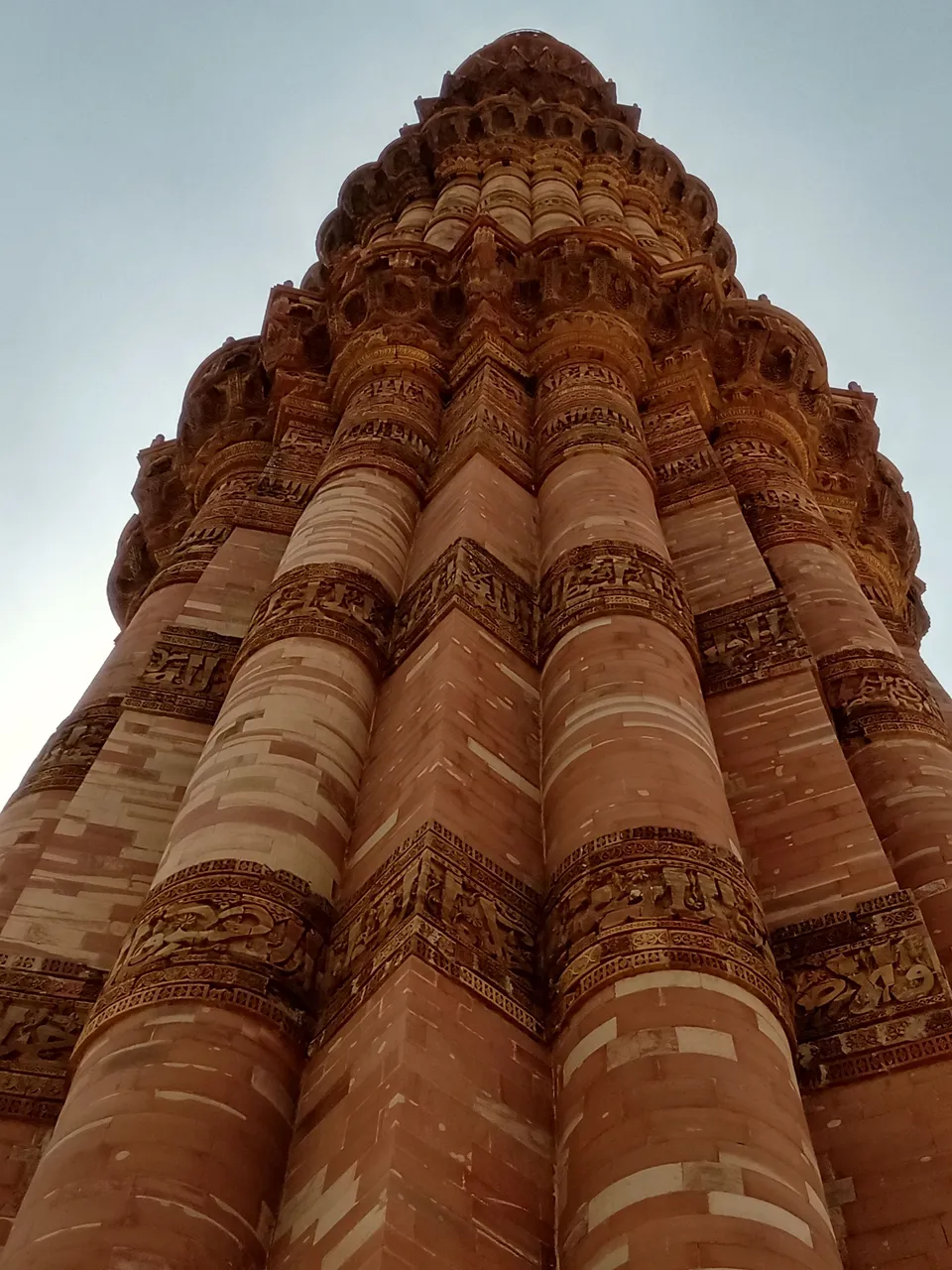
History
The infrastructure of Qutub Minar was established in AD 1199 as one of the earliest sites built by the Delhi Sultans.
Qutub Minar was built as a commemoration of a great victory of Muhammad Ghori (founder of Muslim rule in India) over the Rajput dynasty. He is also considered to be bringing Islamic rule to India. He defeated Delhi’s last Hindu ruler.
His general Qutb-ud-Din Aibak became the first Islamic ruler of north India. It was under his rule that construction of this monument was ordered as a sign of victory and establishment of Muslim rule. So it was suppose to be a grand work of Indo-Islamic architecture and design.
However fate has something else to do. More surprising part of Qutub Minar was that it took 28 years to get completed. The first storey of the minaret was constructed under Qutb-ud-Din Aibak, though the remainder of the storeys were constructed by his different successors. It was because of this that you will notice differrnt style of design at the top of the tower. The first three storeys are made with red sandstone while the remaining storeys were constructed using marble and sandstone. So you might notice shades of white colour at the top.
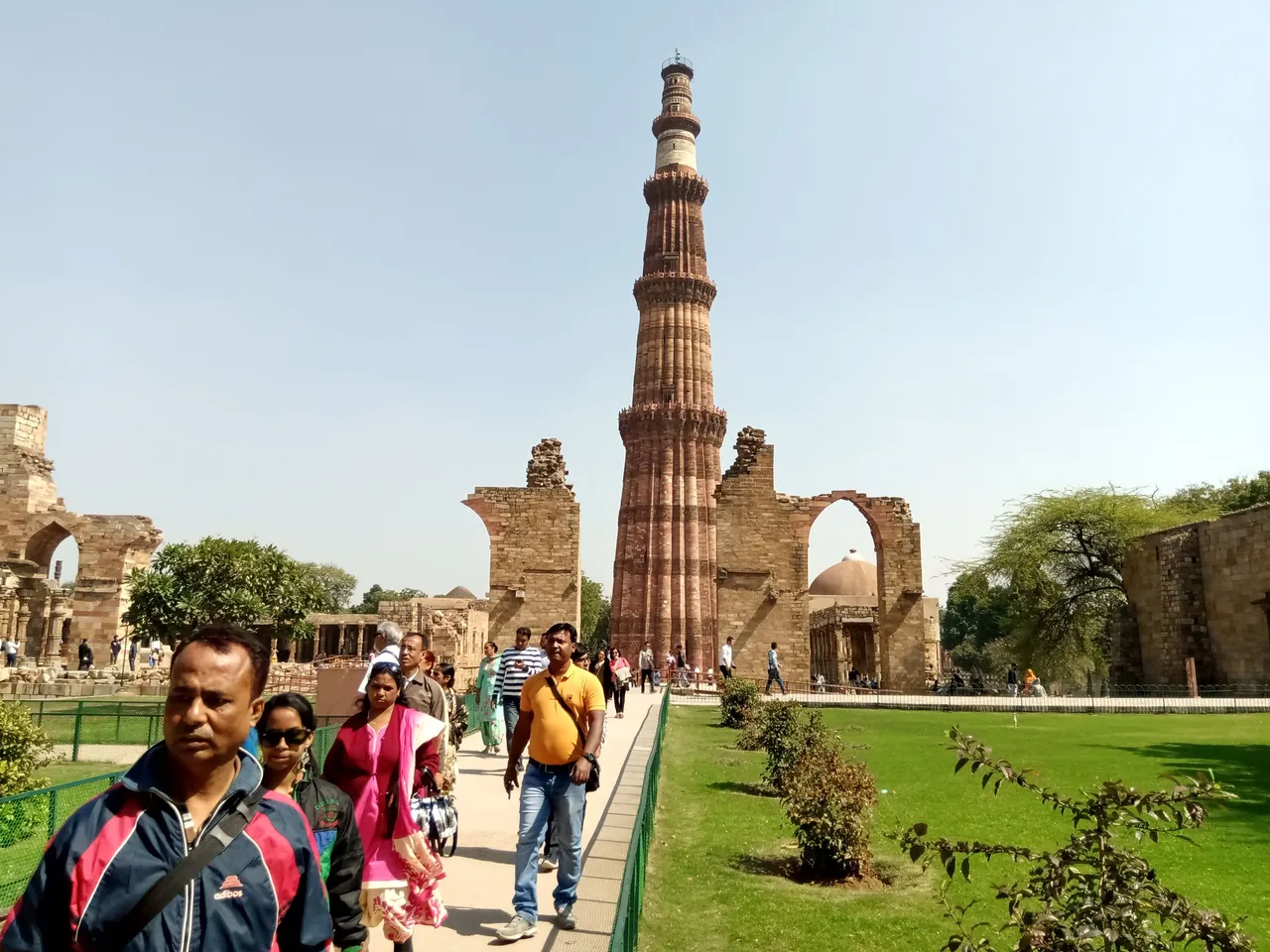
It would be very interesting to know about the architecture and design of this grand minaret.
Architecture
Each of the five different storeys of Qutub Minar has a projected balcony that circles the Minar (backed by stone brackets). If you look closely the cylindrical shaft has inscriptions of the Quran. From the intricate carvings, you’ll note an aura of Afghanistan pattern, blended with local artistic conventions having garlands and lotus borders.
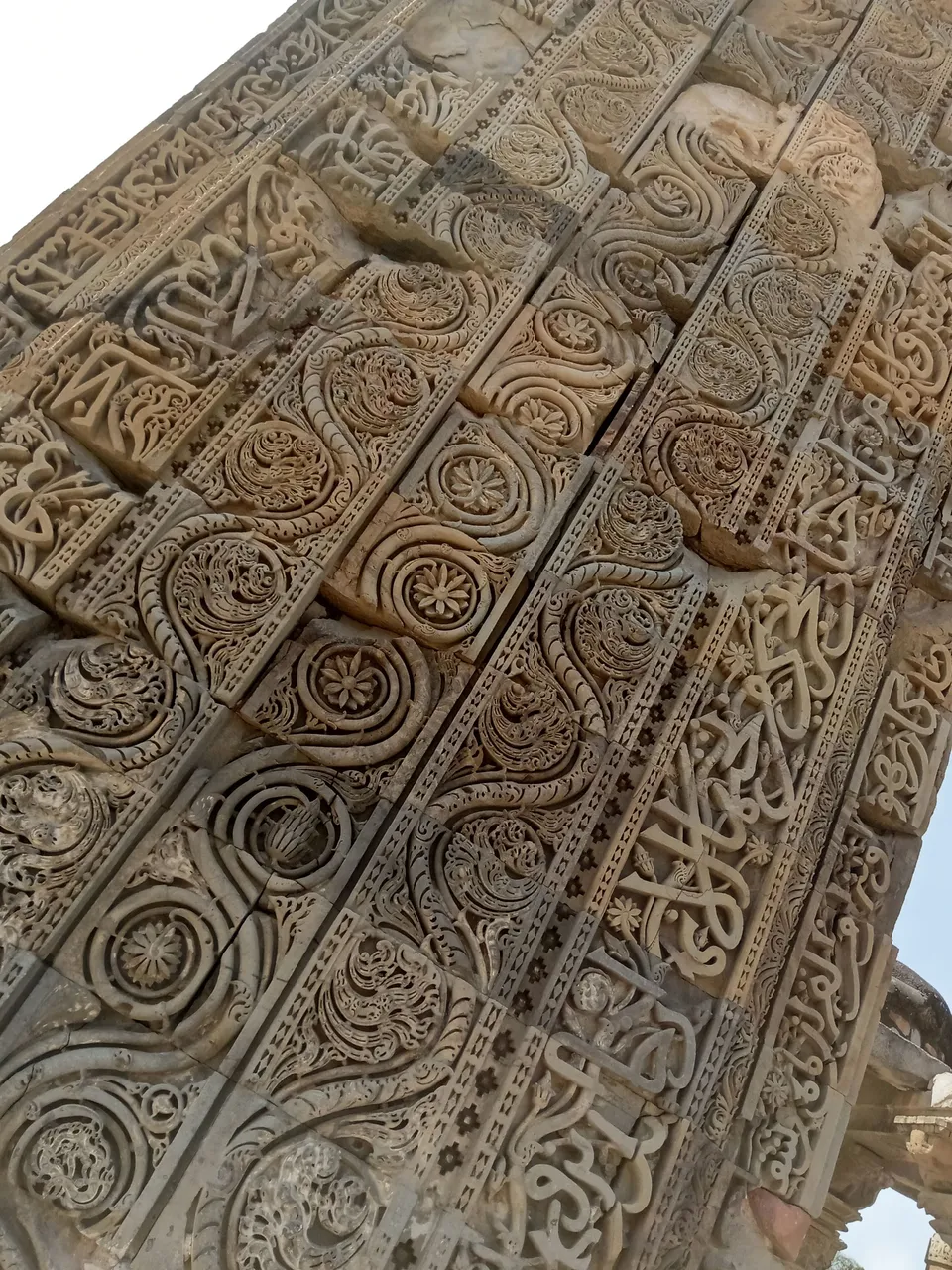
The exterior walls of Qutub Minar reveal its history of construction, with chiseled Parso-Arabic and Nagari character carvings. The inscriptions clearly describe the motive, way, the time taken and every minute detail about this monument.
Fortunately, renovations of the minaret throughout time have maintained the original charm of the building.
The Qutub Minar is surrounded by several great historical monuments and all of them together are referred to as "Qutb Complex". The complex includes: Iron Pillar of Delhi, Quwwat-ul-Islam Mosque, Alai Darwaza, the Tomb of Iltutmish, Alai Minar, Ala-ud-din's Madrasa and Tomb, the Tomb of Imam Zamin, Major Smith's Cupola and Sanderson's Sundial.
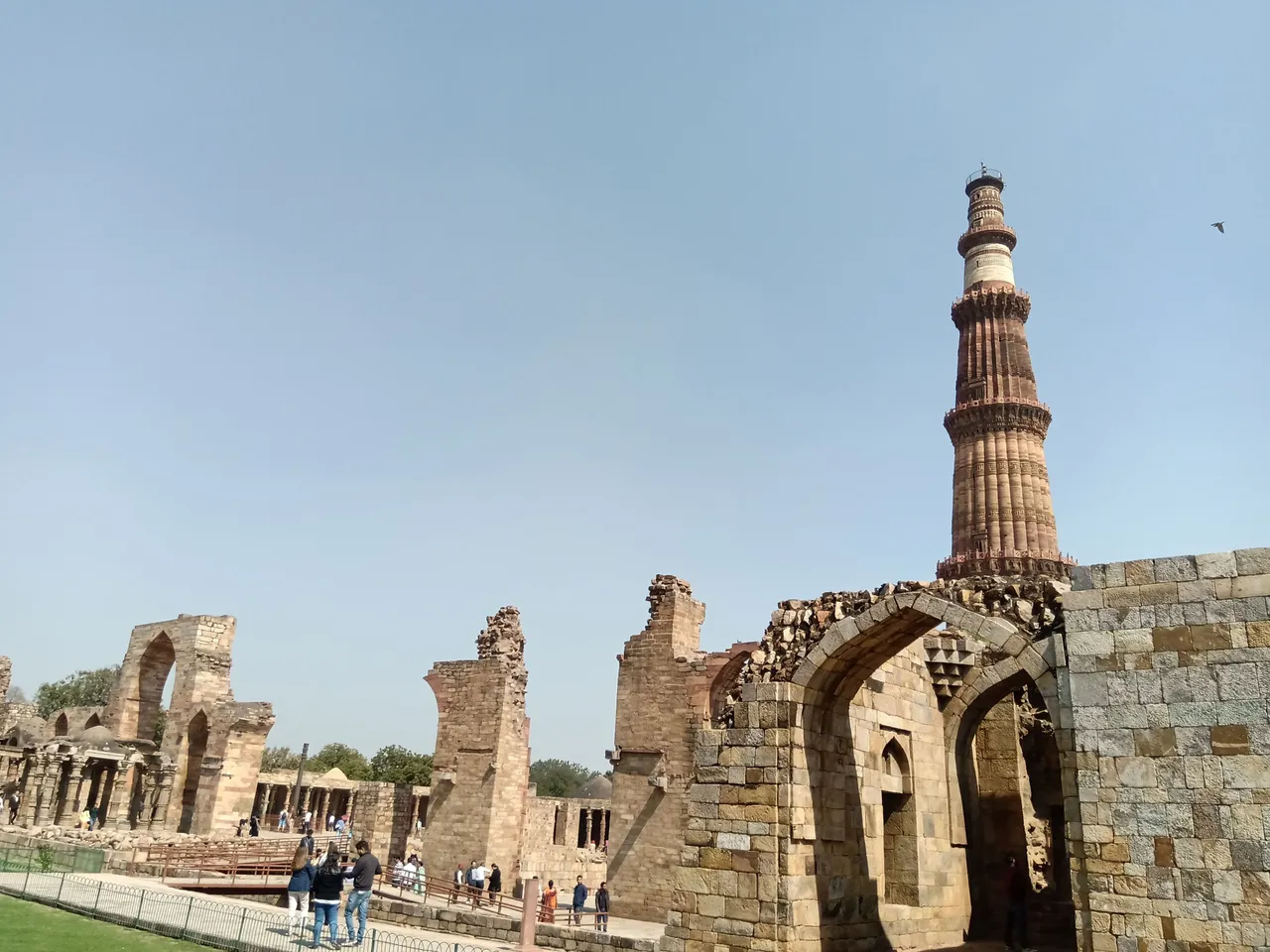 | 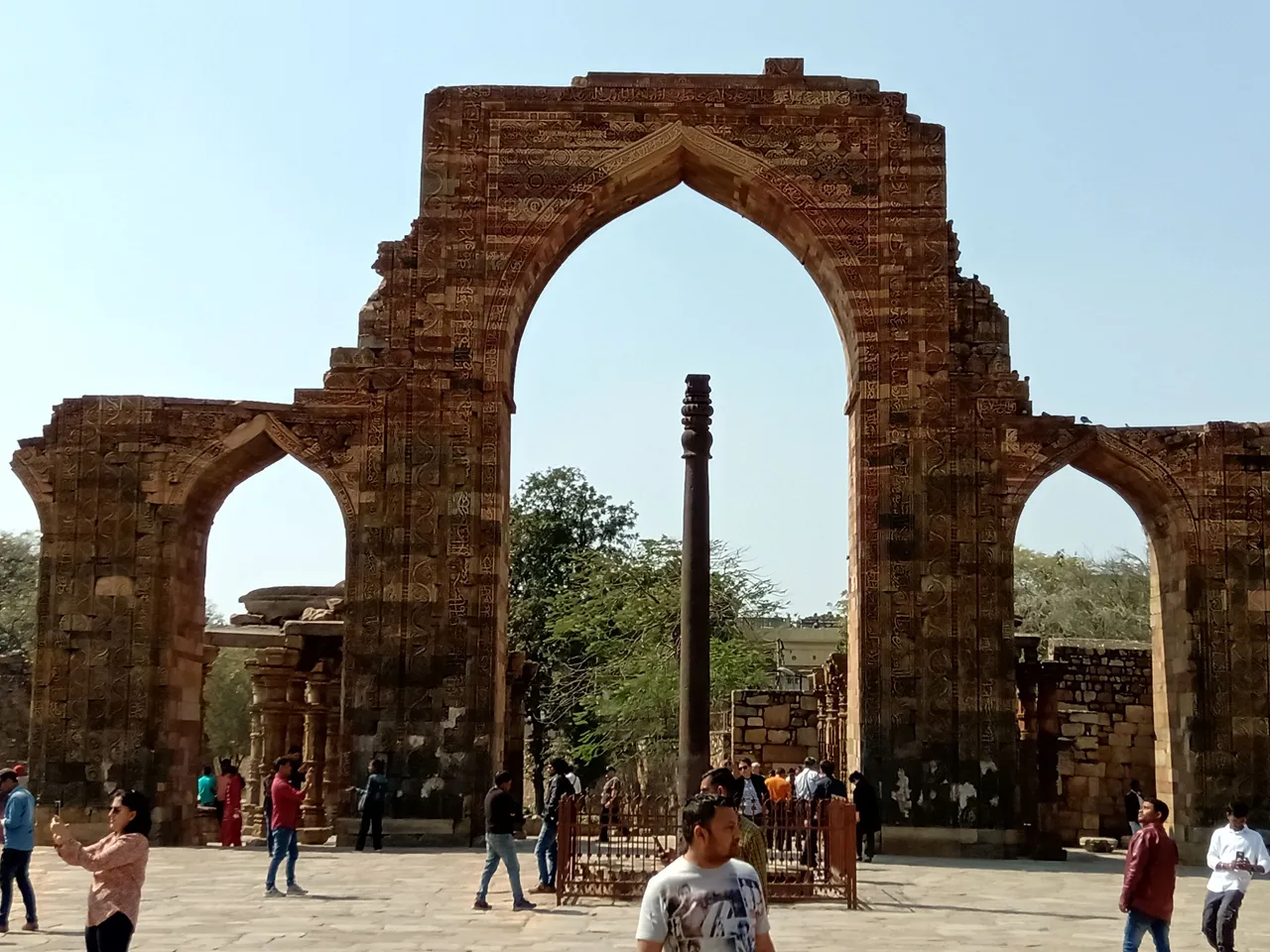 | 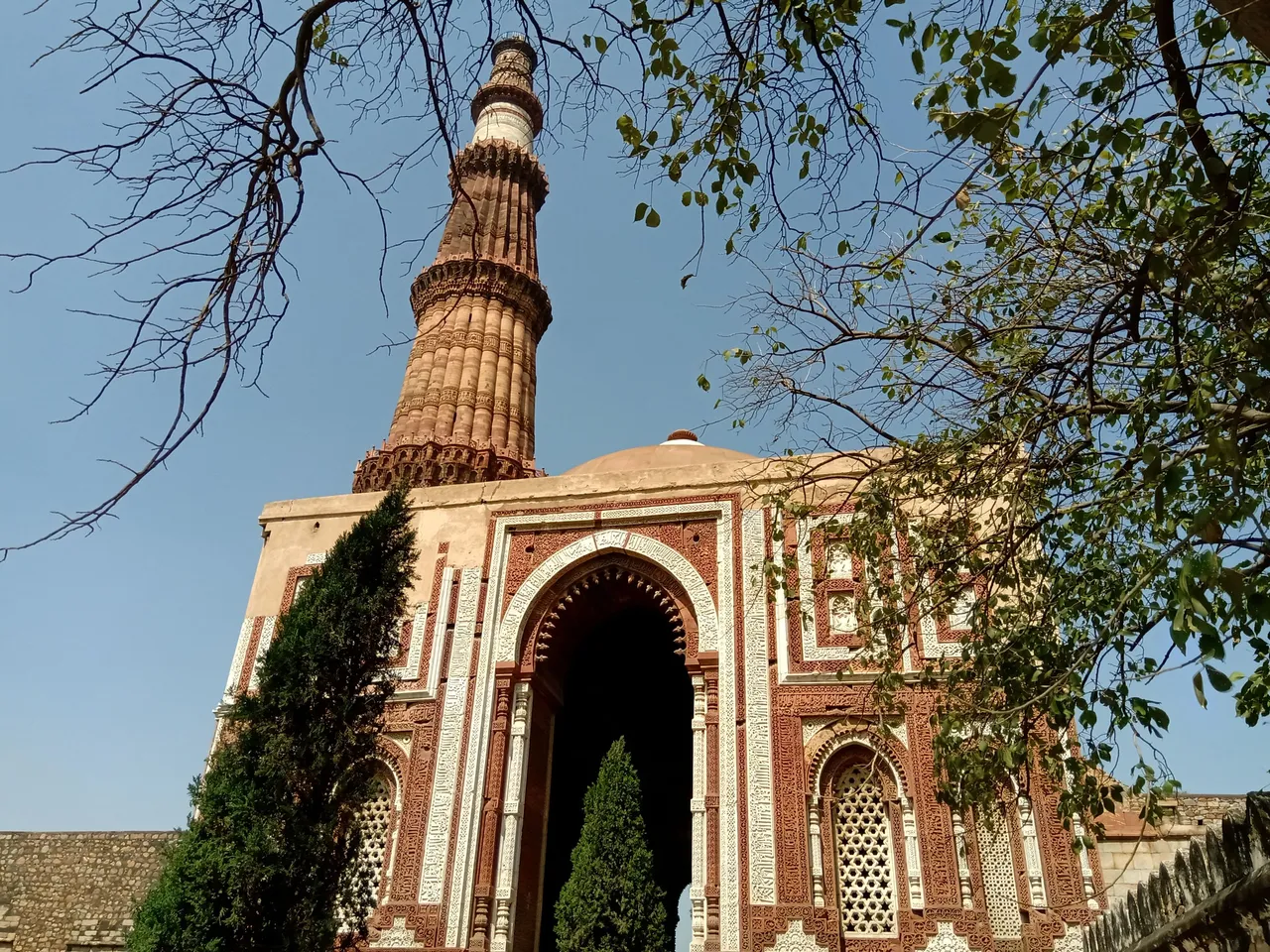 |
|---|
Public access to inside of the tower has been banned since 1981. It was because of a stampede in which after 45 people were killed followed by an electricity failure that plunged the tower's staircase into darkness.
So the view of the spherical staircase from.inside the building is not allowed. However time to time, some restoration works being carried out inside thr minaret.
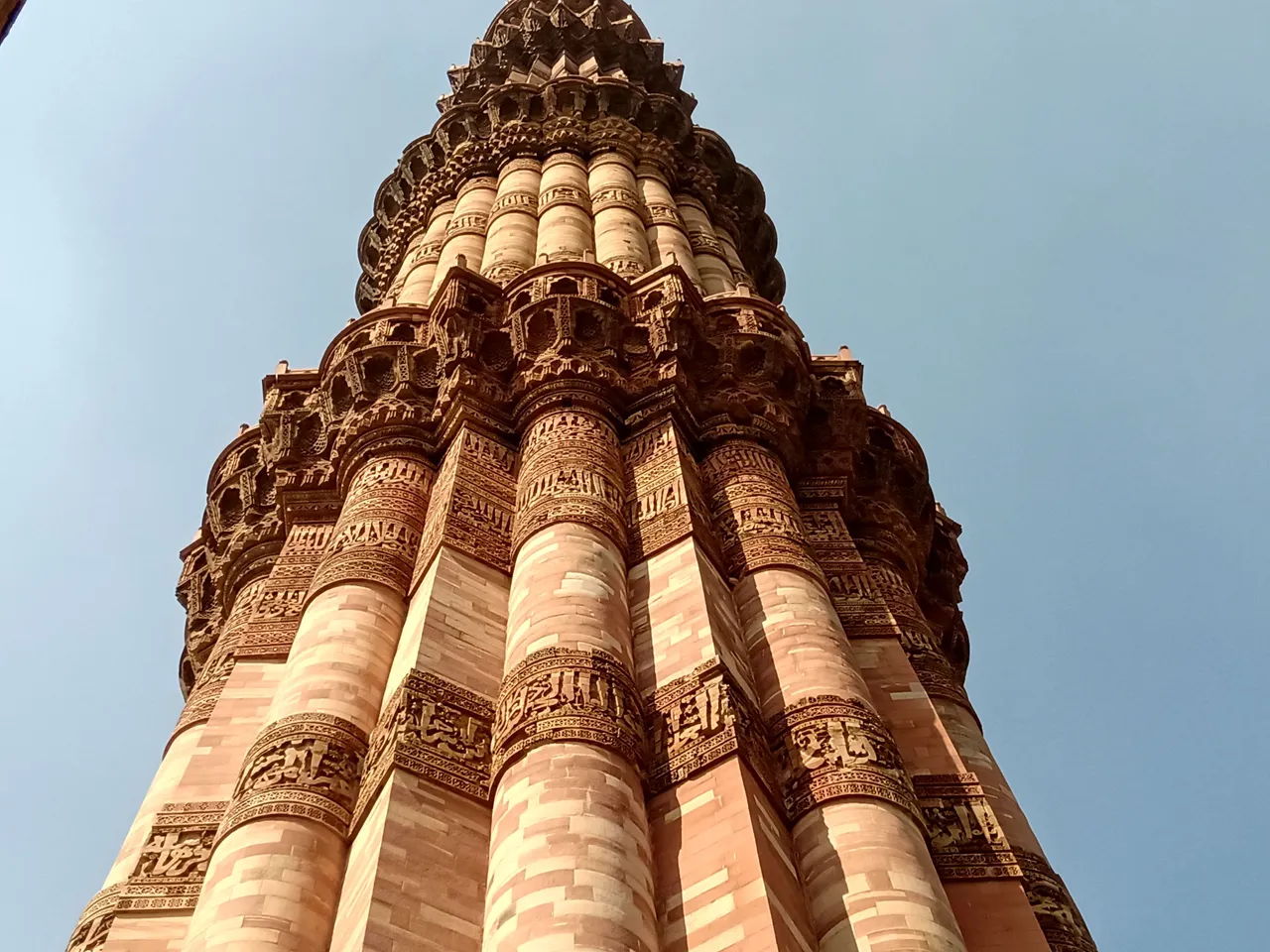
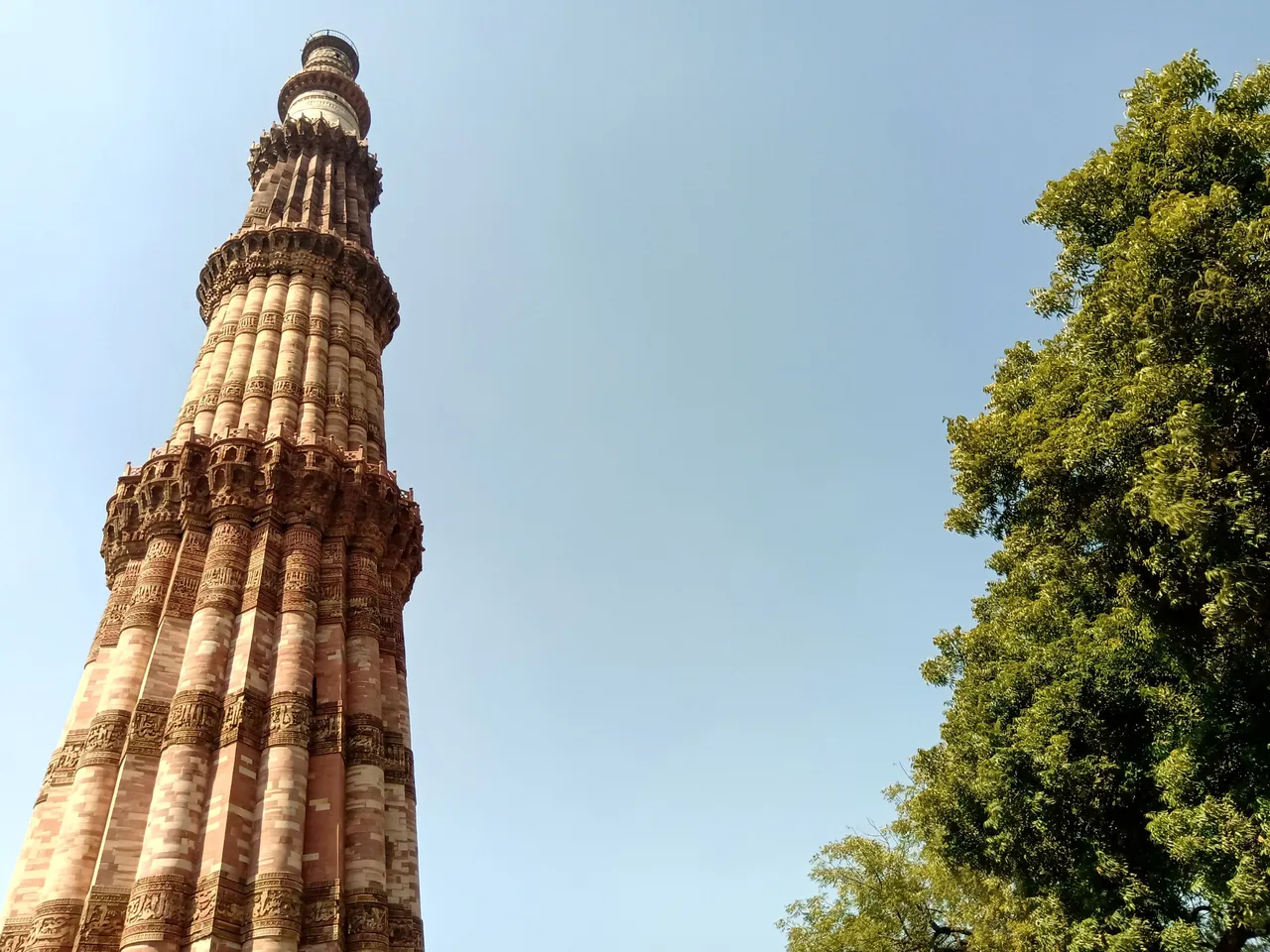
This beautiful tallest minaret buildings of the Qutub Minar complex form one of Delhi's most spectacular sights. One of the finest examples of Indo Islamic architecture. People do visit to explore the amazing part of Indian history, while the localities visit the place to spend some quality time at the green lawns that was spread all inside the complex.
